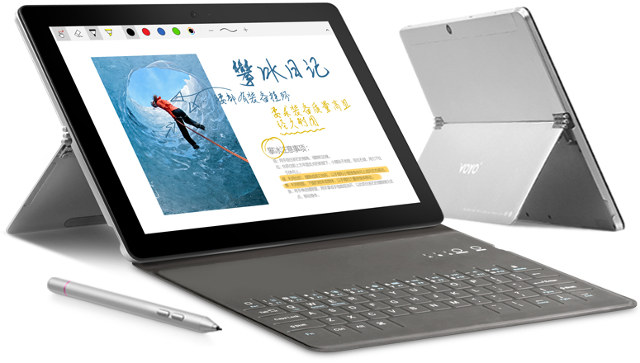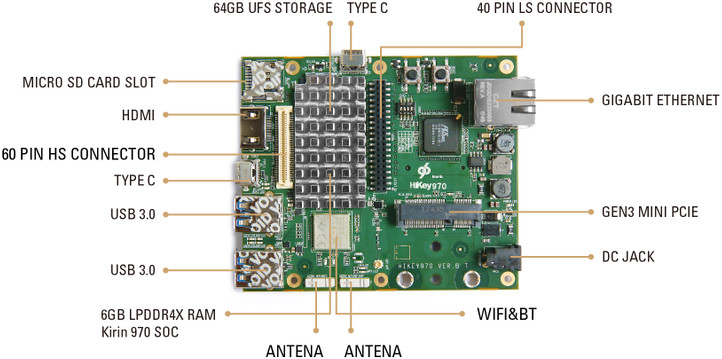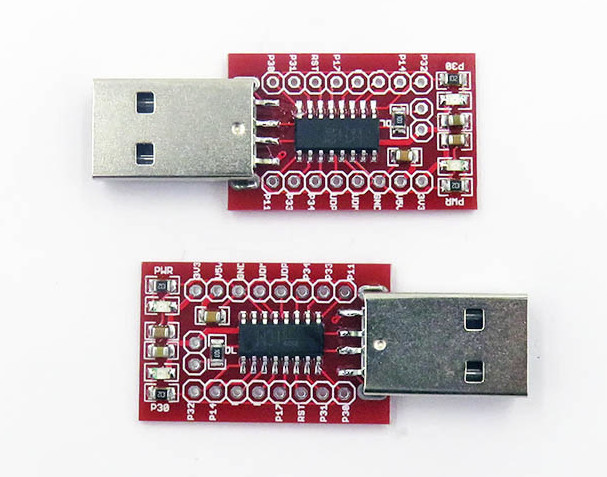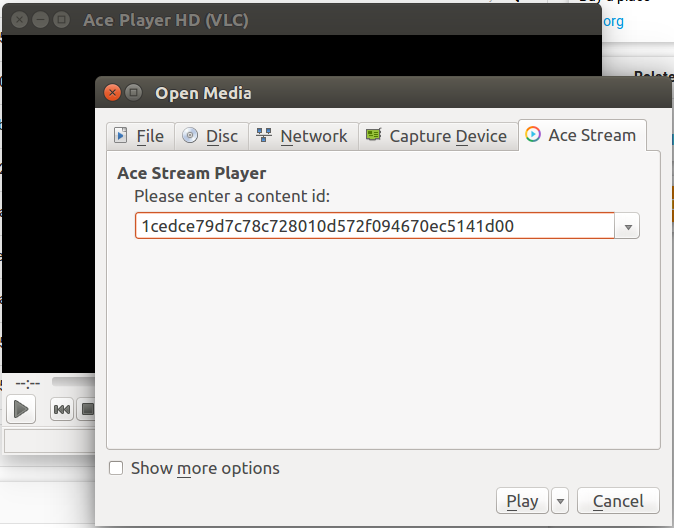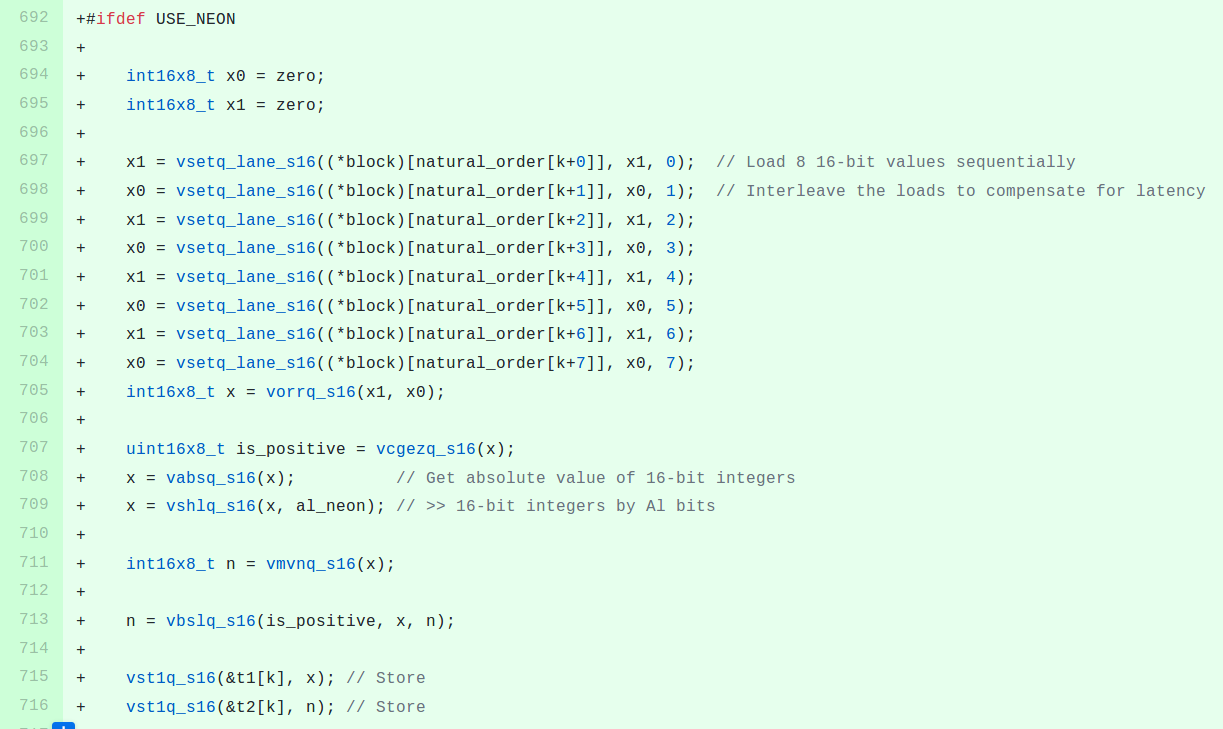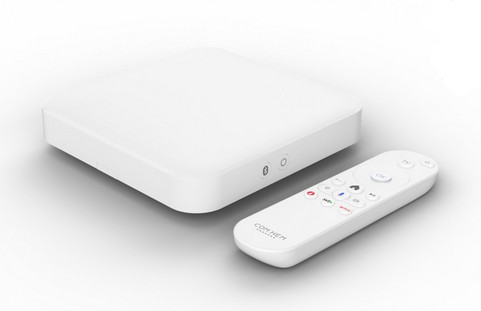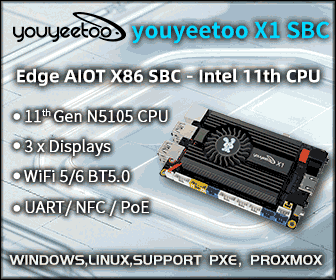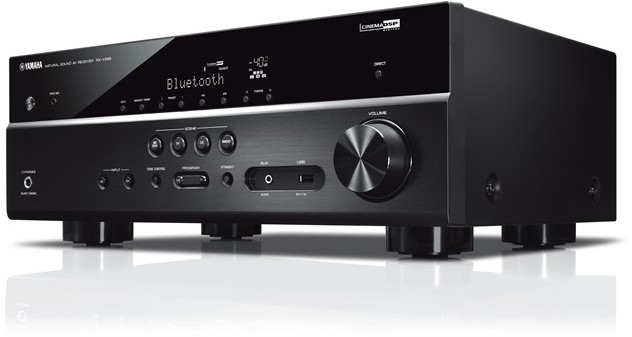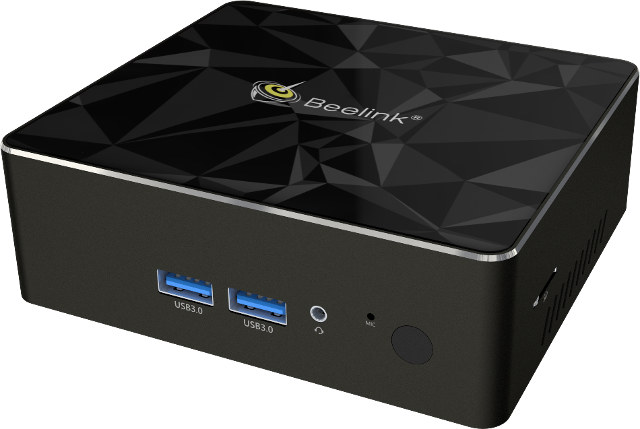Mediatek Helio X20 (MT6797) deca-core processor was announced about 3 years ago, and made into various smartphones – such as Vernee Apollo Lite – as well as MediaTek X20 Android development board. However so far, I did not see any proper tablets based on the processor, but VOYO i8 Max tablet with a 10.1″ display and 4G LTE connectivity has just started to sell for $199.99 and up including shipping. [Update: price drops to US$162.99 with GKB89VW coupon. valid until 2018/7/24] Voyo i8 Max specifications: SoC – Mediatek Helio X20 deca-core processor with two Arm Cortex A72 cores @ 2.1 GHz, four Cortex A53 @ 1.95 GHz, four Cortex A53 @ 1.4 GHz, and Arm Mali-T880 GPU @ 800 MHz System Memory – 4GB RAM Storage – 64GB eMMC flash + micro SD slot up to 64/128GB Display – 10.1″ 1920×1200 IPS display with stylus support Audio – 3.5mm audio […]
Hikey 970 Development Board is Now Up for Pre-order for $299.99
Four A.I. development boards compliant with 96Boards specifications were announced at Linaro Connect HK 2018 last month: HiKey 970, Ultra96, as well as ROCK960 PRO & Enterprise Edition. So for we only knew pricing for Ultra96 ($249), but I’ve now noticed Hikey 970 “Super Edge AI Computing Platform” is now up for pre-order for $299.99 on Lenovator website, with shipping planned for the end of April. [Update: Also found on Seeed Studio for the same price] Hikey 970 specifications: SoC – Huawei/Hisilicon Kirin 970 with 4x Cortex A73 @ 2.36GHz, 4x Cortex A53 @ 1.8GHz, Arm Mali G72-MP12 GPU, NPU (Neural Processing Unit) with 256MAC/cycle @ 960MHz System Memory – 6GB 1866MHz, 4 Channel LPDDR4x Storage – 64GB UFS storage, micro SD card slot, PCIe Gen3 on M.2 M key connector Video Output – HDMI 1.4 type A up to 1080p60 (TBC), 1x 4-lane MIPI DSI (via HS expansion connector) […]
$1.80 CH551 Mini Development Board Features 8-bit C51 Core, USB Interface, and I/Os
Last year, WCH (Nanjing QinHeng Corp.)’s launched a CH55x family of microcontroller based on an 8-bit C51 core with a USB interface, and extra I/Os depending on the selected part number Electrodragon is now listing a tiny USB development board based on CH551 for $1.80, and the chip itself sells for as low as 1.60 RMB (0.25 USD) on Taobao. Specifications: MCU – WCH CH551 8-bit C51 micro-controller USB – 1x USB type A port I/Os – 18 through holes exposing all I/Os from the MCU including GPIOs, USB, 3.3V, 5V GND Misc – On-board power led, user LED (P3.0) Power – 5V via USB port (or pin?) You won’t need an external hardware – such as a USB to TTL board – to program the boards since the MCU supports USB. To enter into programming mode, short connect the two pins in the middle of the board (DL) with […]
How to Install and Use Ace Stream Easily in Ubuntu / Mint Linux
Ace Stream enabling the streaming of videos using P2P (peer-to-peer) technology – specifically BitTorrent protocol – and is especially useful for live streams, but also works for Audio and Video on Demand, and IOTT (Interactive-Over-The-Top). Ace Stream is implemented in a fork of VLC (Ace Player HD) working in Windows, Linux and Android, and I’ve found Full HD quality to be higher than services like YouTube, and with less buffering provided enough users watches the stream. It’s easy to use in Windows, and there used to be an Android app installable from the Play Store but it’s been removed, possibly because of the association of the solution with piracy. But just like Kodi, it’s up to do what you want to use it for. Using Ace Player was easy in Ubuntu up to version 14.04 thanks to a ppa, but with Ubuntu 16.04 it become a little more complicated as you […]
Optimizing JPEG Transformations on Qualcomm Centriq Arm Servers with NEON Instructions
Arm servers are already deployed in some datacenters, but they are pretty new compared to their Intel counterparts, so at this stage software may not always be optimized as well on Arm as on Intel. Vlad Krasnow working for Cloudflare found one of those unoptimized cases when testing out Jpegtran – a utility performing lossless transformation of JPEG files – on one of their Xeon Silver 4116 Server:
|
1 2 3 4 5 |
vlad@xeon:~$ time ./jpegtran -outfile /dev/null -progressive -optimise -copy none test.jpg real 0m2.305s user 0m2.059s sys 0m0.252s |
and comparing it to one based on Qualcomm Centriq 2400 Arm SoC:
|
1 2 3 4 5 |
vlad@arm:~$ time ./jpegtran -outfile /dev/null -progressive -optimise -copy none test.jpg real 0m8.654s user 0m8.433s sys 0m0.225s |
Nearly four times slower on a single core. Not so good, as the company aims for at least 50% of the performance since the Arm processor has double the number of cores. Vlad did some optimization on The Intel processor using SSE instructions before, so he decided to look into optimization the Arm code with NEON instructions instead. First step was to check which functions may slowdown the […]
Com Hem TV Hub is an Hybrid TV Box Powered by Broadcom BCM7271 SoC with VideoCore V GPU
Most people reading this blog will know VideoCore IV is the GPU used in Broadcom BCM283x processors found in Raspberry Pi board, but we’ve previously seen work was done on its successor – VideoCore V GPU – in the Linux kernel. It’s unclear whether the GPU will be used in the next generation Raspberry Pi boards, but there’s a least one hardware platform featuring VideoCore V GPU with Com Hem TV Hub, an Android TV TV box for the Swedish market based on Broadcom BCM7271 SoC. UZX8020CHM specifications based on AndroidTV Guide page: SoC – Broadcom BCM7271 quad core processor @ 1.6 GHz with VideoCore V (V3D-520) GPU System Memory – 2GB RAM Storage – 16GB eMMC flash, microSD slot, optional stackable 1TB hard drive Video Output – HDMI 2.0 up to 4K 60 Hz with HDR support Connectivity – Gigabit Ethernet, 802.11 n/ac WiFi 4×4 MIMO Tuner – Quad […]
Yamaha RX-V385 A/V Receiver to Support eARC (part of HDMI 2.1 specifications)
HDMI 2.1 promises features such as 8K/10K video output, dynamic HDR, or enhanced audio return channel (eARC), but so far I had not seen any hardware boasting support for the new specifications. It’s not really surprising, as the HDMI Compliance Test Specifications (CTS) for HDMI 2.1 is expected to be released in stages starting in Q2 2018. While I have yet to see any HDMI 2.1 capable TV, Yamaha is already showing off a 5.1 A/V receiver allegedly HDMI 2.1 via their upcoming RX-V385 model that will be sold for $299.95 in the US. Key features listed by the company: 5.1-Channel powerful surround sound Bluetooth for wireless connectivity HDMI 2.1 with HDCP 2.2 (4 in/1 out) 4K Ultra HD support, HDR10, Dolby Vision, Hybrid Log-Gamma and BT.2020 YPAO auto-calibration technology for ideal sound That looks good, and if we look into the details specifications we can see HDMI eARC (part […]
Beelink Gmini1 and S2 Gemini Lake Mini PCs Support 2.5″ SATA Drives
Beelink is now showcasing two upcoming Intel Gemini Lake based mini PC at the Hong Kong Electronics Fair 2018. Beelink Gmini1 is a compact actively cooled mini PC powered by Intel Celeron J4105 processor with dual HDMI output, and a 2.5″ SATA bay, while Beelink S2 is a larger – yet thinner – fanless model based on Celeron N4100 processor, also equipped with SATA bay, but instead featuring HDMI and VGA video output ports. Beelink Gmini1 Specifications: SoC – Intel Celeron J4105 quad core processor up to 2.5 GHz with Intel UHD Graphics 600; 10W TDP System Memory – 4GB DDR4 Storage – 32GB eMMC flash, 2.5″ SATA bay, micro SD card slot Video Output – 2x HDMI ports Audio – Via HDMI ports, built-in microphone, 3.5mm audio jack Connectivity – Gigabit Ethernet, dual band 802.11a/b/g/n/ac WiFi, Bluetooth 4.0 USB – 4x USB 3.0 ports Misc – Power button Power […]


